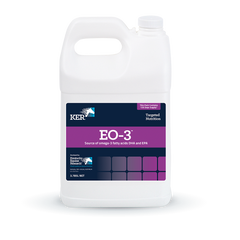Allergies

Signs of allergy occur when an insect bite, chemical preparation, or an inhaled substance such as dust causes the horse’s immune system to react to the irritant.
Allergies result from immune system dysfunction
In some instances, the immune system overreacts to the presence of an antigen. This exaggerated immunologic response is called hypersensitivity and can result in inflammation and organ dysfunction. Horses show the most obvious allergy signs as changes in the skin, eyes, or nostrils.
Hives are soft swellings just under the skin. They are sometimes itchy but not painful, and may be small or very large. Hives that are few in number and limited to a small body area are most likely caused by a localized sensitivity to a liniment, fly spray, or other externally applied product. Hives that are spread over the horse’s entire body usually indicate sensitivity to something that affected the whole horse. Though they are sometimes called “feed bumps” or “protein bumps,” hives are rarely caused by feed ingredients and may be a reaction to an injection or some other irritant.
Intense itching, another common skin reaction, can be caused by an oversensitivity to insect bites. Owners may find raw, oozing patches where the horse has rubbed off hair and skin in an attempt to scratch the itchy spots that are commonly found on the face, chest, midline of the abdomen, or base of the tail.
Finding the cause of an allergic reaction and working out a treatment may be difficult.
Conducting an allergy investigation is a time-consuming endeavour, so a veterinarian may first rule out more common dermatological problems including external parasites (mites or lice, for instance), fungal infections such as dermatophytosis, bacterial folliculitis (inflammation of the hair follicle), and atopy, an inherited predisposition to environmental allergen sensitivity. Horses are known to exhibit contact dermatitis following exposure to a variety of agents.
Inhaled irritants such as dust, mold, and pollen can trigger allergic reactions in sensitive horses. Signs may include coughing, exercise intolerance, and sometimes a thin, clear nasal discharge.
Horses may develop eye irritation and increased tear production because of airborne particles of mold, dust, and pollen. Horses may rub or toss their heads to try to relieve itchy, irritated eyes and nostrils.
Severe allergic reactions can make horses so uncomfortable and distracted that they are unable to train or perform. Finding the cause of an allergic reaction and working out a treatment may be difficult. Owners can ask a veterinarian for help in alleviating an allergic horse’s signs and determining a plan to avoid the irritant that has caused the problem. Other supportive therapies involve supplementation to mediate the excessive inflammatory response and support normal immune system function.
Which solution is right for your horse?
EO-3™ Concentrated direct source of DHA and EPA omega-3 fatty acids. EO-3 is a rich source of the long-chain omega-3 fatty acids DHA and EPA in a palatable liquid form. EO-3 can be fed to all classes of horses including foals, breeding stock, and performance horses to improve the critical ratio of omega-3 to omega-6 fatty acids in the diet.


